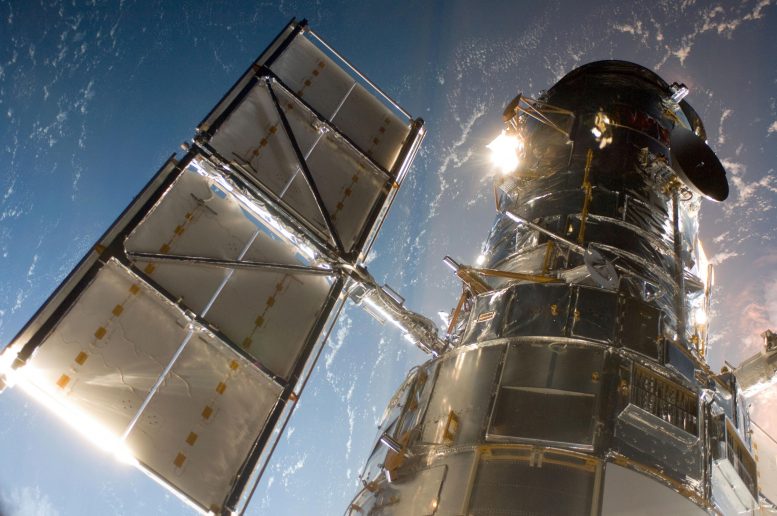
The Hubble Space Telescope was launched by the space shuttle Discovery on April 24, 1990. Avoiding distortions of the atmosphere, Hubble has an unobstructed view peering to planets, stars, and galaxies, some more than 13.4 billion light-years away. Credit: NASA
NASA is continuing to diagnose a problem with the payload computer on the Hubble Space Telescope after completing another set of tests on June 23 and 24. The payload computer halted on June 13 and the spacecraft stopped collecting science data. The telescope itself and its science instruments remain in good health and are currently in a safe configuration.
The spacecraft has two payload computers, one of which serves as a backup, that are located on the Science Instrument and Command and Data Handling (SI C&DH) unit. There are various pieces of hardware which make up both payload computers, including but not limited to:
- a Central Processing Module (CPM), which processes the commands that coordinate and control the science instruments
- a Standard Interface (STINT), which bridges communications between the computer’s CPM and other components
- a communications bus, which contains lines that pass signals and data between hardware
- and one active memory module, which stores operational commands to the instruments. There are three additional modules which serve as backups.
Additional tests performed on June 23 and 24 included turning on the backup computer for the first time in space. The tests showed that numerous combinations of these hardware pieces from both the primary and backup payload computer all experienced the same error — commands to write into or read from memory were not successful.
Since it is highly unlikely that all individual hardware elements have a problem, the team is now looking at other hardware as the possible culprit, including the Command Unit/Science Data Formatter (CU/SDF), another module on the SI C&DH. The CU formats and sends commands and data to specific destinations, including the science instruments. The SDF formats the science data from the science instruments for transmission to the ground. The team is also looking at the power regulator to see if possibly the voltages being supplied to hardware are not what they should be. A power regulator ensures a steady constant voltage supply. If the voltage is out of limits, it could cause the problems observed.
Over the next week, the team will continue to assess hardware on the SI C&DH unit to identify if something else may be causing the problem. If the team determines the CU/SDF or the power regulator is the likely cause, they will recommend switching to the backup CU/SDF module and the backup power regulator.
Launched in 1990, Hubble has been observing the universe for over 31 years. It has contributed to some of the most significant discoveries of our cosmos, including the accelerating expansion of the universe, the evolution of galaxies over time, and the first atmospheric studies of planets beyond our solar system. Read more about some of Hubble’s key scientific contributions.

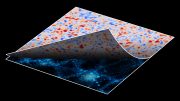

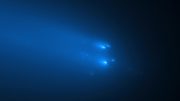
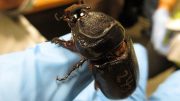
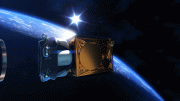



A few thoughts:
– The Hubble has been serviced 5 times, all separate missions. Possibly this is telling NASA a new mission to replace the computers is in order.
– Don’t be surprised if the Hubble has been hacked.
Why replace what seems to be working? Since the backup and main unit both exhibit the error, it seems more likely that the cause is something like the possibilities the article mentioned instead. Hacking also seems unlikely.
I would say to let them do their jobs and investigate it further. Even if they don’t find the cause right away, ruling things out will help them make wise decisions for the next servicing mission. Mass is mass.
What a bunch of empty words, that say nothing else but ‘keep trying’ Whoopie…
Lets just consider for a moment the possibility that the problem is unfixable from the ground.
Do we have the hardware capable of going to Hubble a effecting a repair?
Probably not.
Could we configure/modify a current spacecraft to effect such a repair?
Soyuz? no.
Starliner? Yes, but not in our lifetimes.
Dragon? You betcha. Would surprise me if Spacex hasn’t already thought of it already.
It seems the data bus or address bus is a commonality. Is there a secondary bus system? OSIRIS-Rx baby!!!
James Webb telescope to the rescue!!
Need to launch right now!!
I bet they need the little button batteries that keep the date, etc. changed out.
Have you tried turning it off and on again?
Having diagnosed, repaired, modified and altered 1000s of systems, this is clearly a common/shared hardware issue, possibly a secondary circuit board related to power swap alts or other related power transfer. The module can be bypassed and/or replaced, but will require a person to effect the mods.
Yeah that’s what I’m thinking the Hubble sounds like it’s been hacked and I won’t be surprised if china or Russia had something to do with this issue or even something even more far fetched as :::Aliens::: maybe the telescope caught some sort of data something they didnt want humans to know or maybe it’s as simple as malfunctioning part of equipment.
Do you have ‘HAL’ aboard?!? Did he flick some switches? Just asking… Nevertheless, 31 yes is in itself already kinda amazing! Keep working away…
They can’t send parts full they know what’s broke.
Undo the most recent Windows update!